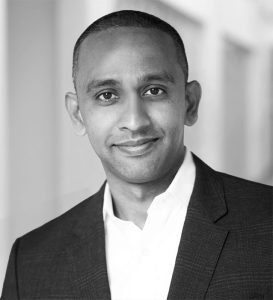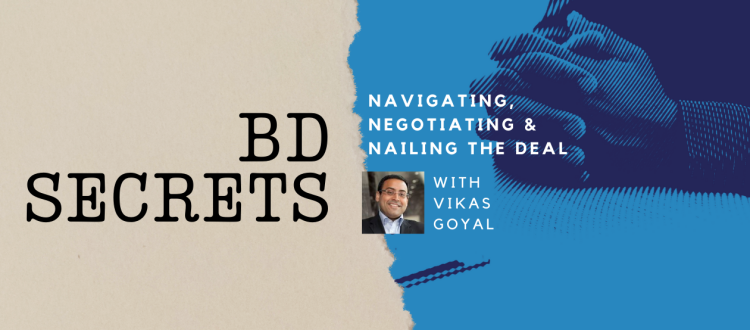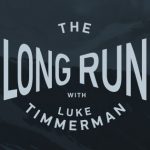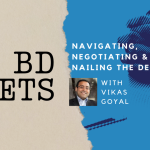Ram Aiyar on Finding Deal Alignment Internally and Externally

Vikas Goyal, former SVP, business development, Pandion Therapeutics (now part of Merck)
Ram Aiyar is currently the CEO of Cambridge, Mass.-based Korro Bio, a company using RNA editing to treat genetic diseases, including Alpha-1 Antitrypsin Deficiency.
Before he took that job, he was a founder and executive vice president of corporate and business development at Corvidia Therapeutics. That company was acquired by Novo Nordisk in August 2020 for $725 million upfront, and $2.1 billion total.
The deal gave Novo access to ziltivekimab, a fully human monoclonal antibody with half-life extension technology, targeting the IL-6 ligand. The drug was in a Phase 2b trial in chronic kidney disease at the time of the acquisition, with plans to proceed into a global cardiovascular outcomes Phase 3 study. The Phase 2b data that drove the acquisition was published in The Lancet in May 2021.
Novo saw a large commercial opportunity in cardiovascular disease in chronic kidney disease patients, which would build on their existing insulin and GLP-1 driven diabetes franchise.
Aiyar spoke with me recently about that deal and some of the lessons learned.

Ram Aiyar, CEO, Korro Bio
Why did your team and board believe it was the right time to partner? Why was Novo the right partner to work with?
The science behind our drug was validated. The question was ‘did we have the money to bring ziltivekimab through approval?’ This would have required running a large cardiovascular outcome study that might cost between $300-500 million – and not to mention the investments required to support the commercial piece after that.
When you think about the likelihood of success and the amount of capital required to fully develop, we wanted to find a group that was committed to running that outcome study, and running it in a way that we thought would have a high likelihood of success.
Let’s leave money aside for a second. There were a couple of parties around the table during our acquisition. When we thought about how these companies might develop the drug themselves, we were very aligned with Novo on how we were approaching the unmet need for patients, and on how we would execute the drug development plans towards approval (assuming the science continued to play out).
There were other potential partners that wanted to go into larger patient populations. We agreed those trials could be done, but also believed conducting those trials could delay the approval and launch of ziltivekimab for CKD patients, where the unmet need was very high and where ziltivekimab’s mechanism had a very good chance of success. For example, Novartis’ CANTOS study with Paul Ridker [evaluating the anti IL-1ꞵ mAb canakinumab in patients with atherosclerosis] showed really differentiated benefit in patients with CKD. In just 1,800 patients over two years they showed a 50% mortality benefit.
Philosophically, Novo was aligned with our approach. Case in point, Novo has stuck to the timelines that we had put together back in 2020. To see large pharma move with that pace is so encouraging. I really believe the drug is in the hands of the right folks.
What was your role in building the relationship with Novo and ultimately closing the collaboration?
This is a team sport! We built our relationship with Novo over the course of three years. Initially, they were interested in one of our earlier programs which was going after acute pancreatitis. Those interactions built up a lot of goodwill. Over that time, Novo had strategic changes with new people coming in and a new desire to expand into cardiovascular disease. Our interactions shifted to ziltivekimab. We became deeply engaged on the drug’s science, where the drug needed to go, and the evidence that would be required to support approval.
I was on the frontline to a certain extent to set up those relationships – and managing a lot of back channel discussions to keep our companies aligned – but all of us played a role. Our CMO Michael Davidson played a big part in convincing Novo’s leadership of ziltivekimab’s therapeutic potential. Matt Devalaraja, our CSO and head of R&D who was responsible for all of our nonclinical, translational and CMC development, was key to convincing Novo the safety benefits our drug brought due to the low-dose and that we were at commercial stage manufacturing and ready for Phase 3. And during the final stages of the transaction, it was our CEO Marc de Garidel who played a role with Novo’s CEO [Lars Fruergaard Jørgensen] to ensure all the pieces tied together, and to remind Novo’s leadership that ziltivekimab’s had the potential to completely change Novo’s revenue trajectory.
How far into this 3-yr relationship building did you realize how serious Novo’s interest was?
I remember it very well – it was at the 2019 European Socety of Cardiology Congress [in Paris]. I knew we needed to get the right folks within Novo Nordisk educated, interested and engaged on ziltivekimab. We did two things. First, to at least start the conversation, I asked an old colleague [Marian Nakada at JJDC] who had previously worked with Novo’s head of CV [Karin Conde-Knape] to make a personal connection. At the same time, Michael [Davidson] and I reached out to one of Novo’s KOLs, [Dr. John Kastelein]. So there was this independent and positive reinforcement with Novo around the ESC Congress. That’s where the engagement really started and they got interested to dig deeper.
Over the next year as we generated more clinical data, that interest level just grew. I think we were on the top of their list for a year or so before we transacted.
It started with a small group of people at ESC 2019, but it very rapidly progressed to high level discussions with Novo’s leadership. There were maybe 10 people from Novo involved – their CSO [Mads Krogsgaard], Head of R&D [Marcus Schindler] their CV team, and the corresponding business development people. Zaki Salanti in Novo’s Search and Evaluation group led the scientific discussions. On the transactions side it was John McDonald, Novo’s head of business development.
In addition to the clinical data, what else drove Novo’s interest in partnering with you?
We had a pre-filled syringe in commercial scale manufacturing.
I think sometimes, especially with manufacturing, if a potential transaction could occur, companies may defer the investments and take a “minimal” path. We did not do that.
We started on CMC even in our Series A and that paid dividends for us. If there is any question you haven’t asked yet, it is where would I advise companies to invest early. We made a conscious investment in CMC. We were ready to go whether we were doing the study or a partner was doing it. Because if we didn’t do that, Novo wouldn’t have been able to start the outcomes study so rapidly. It would have taken a year or so of CMC work. And that would have had an impact on the transaction.
We had checked a lot of boxes for them. What was surprising for Novo was that Corvidia was a 15-person company. I remember when we went through diligence and transfer of CMC – they had 50 people on their side and we had literally 5. It was amazing to them that a 5 person team could do everything.
So you’ve got this really big clinical opportunity already with CKD, but then this even much larger opportunity with broader cardiovascular disease – how do you keep people’s eyes on the ball?
The Novo team was very pragmatic – they wanted to get the drug approved, they wanted to follow the strongest scientific evidence, and they wanted to start generating revenues. And CKD was a natural extension of Novo’s existing product mix of insulin and GLP-1 drugs for diabetes.
Diabetics are patients who have kidney and cardiovascular complications. 60% of CKD patients are diabetics.
When you think about the cardiometabolic unmet need from an anti-inflammatory standpoint, CKD really jumps out. And CKD is a very large clinical opportunity – it’s 3 million patients! And we had done enough commercial legwork on how we’d go to market, including looking at potential pricing strategies, to know that CKD was a very attractive business opportunity compared to other potential new drug opportunities.
As a small company, we made a conscious effort to provide the best benefit and long-term value to patients. There were some parties who got the huge potential across other cardiovascular indications and were only focused on that. But we were always clear about where we thought the data was strongest and where we wanted to take ziltivekimab in CKD.
We were lucky with Novo.
One, we had multiple parties at the table, including other potential industry partners and also potential investors. Novo had to at least offer us par value.
Two, we found a partner who really wanted ziltivekimab and is moving the drug like it’s their own child.
At one point, the CEO and CSO of Novo said that if Novo believes in this asset Novo should go after it and get the deal done. And so now we have the confidence that they will treat the drug well, develop it well, and turn it into a product. Even more than a year after the transaction, Lars [Novo’s CEO] mentions ziltivekimab and Corvidia in investor calls.
There’s an interesting aside here on how we approached indication selection internally. At one point in Corvidia’s history, we had considered going after anemia. But the clinical data said the mechanism could have huge benefit in CKD. And both indications would have been similar heavy lifts in terms of development costs and timelines. We as a team made a change in strategy in mid to early-2019 to follow where the data led us and committed to pursuing the cardiovascular outcomes in CKD patients. As a biotech, this decision was not for the faint of the heart, and [we were] fortunate to have the support of our board of directors.
We were in our Phase 2 is when COVID-19 was hitting. At the time, Actemra was being used off-label to treat COVID cytokine storm [Actemra (tocilizumab) is another mAb working in the IL-6 pathway, is already approved for multiple rheumatological diseases, and received an EUA for use in hospitalized COVID patients in June 2021].
The Corvidia team saw there may be an opportunity for us to approve ziltivekimab in a very rapid fashion for COVID, an indication that would not require a $400 million clinical outcomes study. But there was also a lot of frenzy about COVID at the time, and the Pfizer and Moderna vaccines were coming together. And we didn’t want to jeopardize access to ziltivekimab for CKD patients.
By the way, we were very transparent with Novo about all of this.
What other deal structures were being discussed? Did your team ever consider a co-development / co-commercialization structure?
There were some parties at the table who wanted to partner with us in Europe. But Marc had a lot of commercial experience and wanted us to be wary of slicing up the drug to multiple parties whose commercial interests may or may not be aligned in the future.
And we were pretty confident that we could get started with the Phase 3 study on our own. We had financing term sheets from investors that would have let us do this . . .
. . . wait, so Novo was competing against you raising more money and going it alone?
OK, that’s where the money part comes in. At the end of the day, when you compare a $725 million upfront cash vs a hypothetical $300+ million follow-on financing, it’s hard to ignore the tangible return that amount of capital would give our shareholders today.
Even when you’ve got access to the amount of capital you need with a nice premium on the valuation, you still have to ask the question about time to return for shareholders. Our investors had been in the company for 3-4 years already; if we kept going, how much longer would it take from here?
But yes, we had options and could say no to less attractive partnership proposals.
Any advice on how to say “no” to partners? How do you do that in a way that makes them come back with an even better offer?
Haha, that’s a good one. The balancing act is to not say “no” in an aggressive manner, to have real alternative options, and to be able to share your business situation. Most folks on the other side understand this. They wouldn’t even engage in a conversation if there was no possibility of a transaction. I think that’s also part of why it took a year plus to get here with Novo. The Novo team was really feeling us out to see where to even start the business discussion.
All of us understood that if we had done a follow-on financing, Corvidia’s valuation would significantly change. And all of us understood that we weren’t just talking about an upfront acquisition payment, we were also talking about a several hundred million dollar subsequent investment to develop ziltivekimab.
We were also transparent about how we would do the development, sharing data to help guide what pricing could be, and sharing tangible data on the relevant patient population. And we laid out for partners what we thought our worst case and upside scenarios could be, effectively setting expectations.
None of our discussions ever started at a super low-ball range, but the first offers were not the best offers. And if we did get a “low” offer, I actually spent time with the other party to explain why it was not a fair offer and to walk them through Corvidia’s perspective of the potential. If you as a company are not fully committed to a path from a patient population perspective, or not fully committed to getting the data to really support that potential, then you’re in no man’s land negotiating on opinion. By the time we launched our Phase 2b, we had all of that buttoned up.
And how did your team work out your own reservation price? How did you know what was “good enough”?
That can be hard. When there’s an interested party at the table, there can already be expectations on size of exit. As a management team, we’re in the middle aligning the interests between investors, the Board, and external parties.
What I found helpful was just laying out opportunities and risks – not necessarily putting probabilities – but just laying out the binary things that could go well or could go wrong, and then discussing with the team that we would be fine with either of those outcomes. So when you lay out the pros and cons, the opportunities and the costs, that plays itself out in terms of level-setting for everybody. And the question is an easier one at that point.
There was also an older partnership process that went through some negotiation dynamics. It was an earlier potential transaction with a separate company about 18 months before all of this with Novo, and before we had started our Phase 2b study. Corvidia had a diverse investor base including European investors, US investors, small investors, big investors, and even single LP investors.
There were some investors who were OK with lower exit numbers. There were others who, given the potential of the company, wanted more. Through that historical process, there was some level-setting in terms of what the market thought was reasonable, how Corvidia should approach a transaction, our valuation expectations, as well as an understanding of our investors’ range of intentions. So coming into the Novo discussion, there was already Board alignment about how we would move forward with a potential acquisition.
Another consideration for us was that we needed access to significant capital to fund the next cardiovascular outcomes study. Everybody loved the science, the product, and the team. But there was financing risk that would need to be removed off the table.
Should we go public? Did we need a step before that to support the IPO? We started a financing process about a potential Series C, and ended up with $350-400 million in term sheets. The Board was involved in all of those investor discussions about capital availability and the risks of running the clinical outcomes study. Let’s just say the valuation proposals from new investors were a tad bit lower than what we ultimately got in the acquisition.
I will say one thing, Vikas, outside of investors and the market, a very key alignment is internal team alignment. I cannot stress enough that it is critical the management team first knows what it wants to do. And then we can align with the other parties around the table. If there are disparate voices within the team about what to do or not to do, no matter where you end up in a negotiation, there is uncertainty. That was a learning for us in that previous transaction discussion. Some folks at Corvidia wanted to do it, others didn’t want to do it, and still other folks wanted to do something different. That also got clarified over time. If there is trust around the team, I don’t think that is necessarily a challenge. In Corvidia’s case, I truly believe that the four of us [Marc, Michael, Matt, and Ram] were tied at the hip. Sure, we had disparate opinions, but all opinions were heard and discussed, and we disagreed and committed.
In those last stages with Novo, how did the process go?
Over the year or so of our process with Novo, the drama was really around data, and that really came to a head when we were close to executing. They wanted, all of us wanted, to see what our Phase 2b data looked like. Any deal and its terms were contingent on that data. And this was during COVID [which was straining many clinical trial timelines]. Luckily, our clinical team was fantastic and we recruited faster than anticipated and got our data early. We were sharing data with Novo and other parties as the database lock came through. We were very factual about what we saw and what the safety and efficacy profile looked like. And we were fortunate that the data came out as we anticipated.
As our Phase 2b data came out, multiple parties got excited and came to the table trying to move fast. We hired a banker at the very last minute, first to have a buffer so the same information was exchanged with all parties, and to also ensure we had the right relationships around the table. And then it went very, very fast. We executed in about a week and a half.
How did you create this situation with so many people ready for your data?
An important aspect there is that it takes 3 years to build competitive tension. You have to start with the relationship and then you’ve got to update people with everything going on along the way. There is no guarantee they are actually listening and interested. Strategies change any given moment in large pharmas. So a big part is keeping everyone informed – whether they like it or not. It seems like an obvious thing to just maintain relationships over time, but it’s under-appreciated in the industry.
As an aside, the data room is a great indicator of how many people are actually digging in and how interested they really are.
[laughs]
So now you’re CEO of Korro. What are the pro’s and con’s of being the BD person vs the CEO? What advice would you share?
One difference is the BD person is in a position to get overruled, no harm no foul. But the CEO, the buck 100% stops with them. At the end of the day, it’s the CEO’s judgment that the Board has to listen to or not.
Second, the BD person is in the middle between your team, the external party, and the Board. Because you’re just a conduit to ensure that everyone is aligned. That means you can do the market check – coming back and letting the team know what is going on outside. Usually, the BD person is alone in those market check discussions, so it gives you a buffer and room to play with business terms with the other side. And you can always be overruled and go back afterwards and play the “what do I know” card.
That said, some of the best interactions in my opinion were when you had both a scientific leader and a BD person together with the external party, to bridge those two topics. It’s also a good check for yourself, too. There were times where we would come back from meetings with different perspectives. There are things that my colleague caught, and there were things that I heard and they were different. It’s important to have that check.
Lot of times, folks internally may have drunk their own Kool-Aid. They’re so focused on doing the work. They don’t go out and see what’s happening externally. So the BD person will actually have to bring the scientific team members to the table to say “OK, here’s what others externally are doing and saying. Here’s the evidence to support their position. Should we do something different?” You’re not telling people what to do – you’re just opening up the window. Sometimes it’s an under-appreciated part of the BD job, but it is critical. Whether we like it or not, whether it’s on the science side or the finance side, the market is often right. We can go in a different direction than the market, but at least we need to know that perspective. You can’t just put your head down and do the work.






